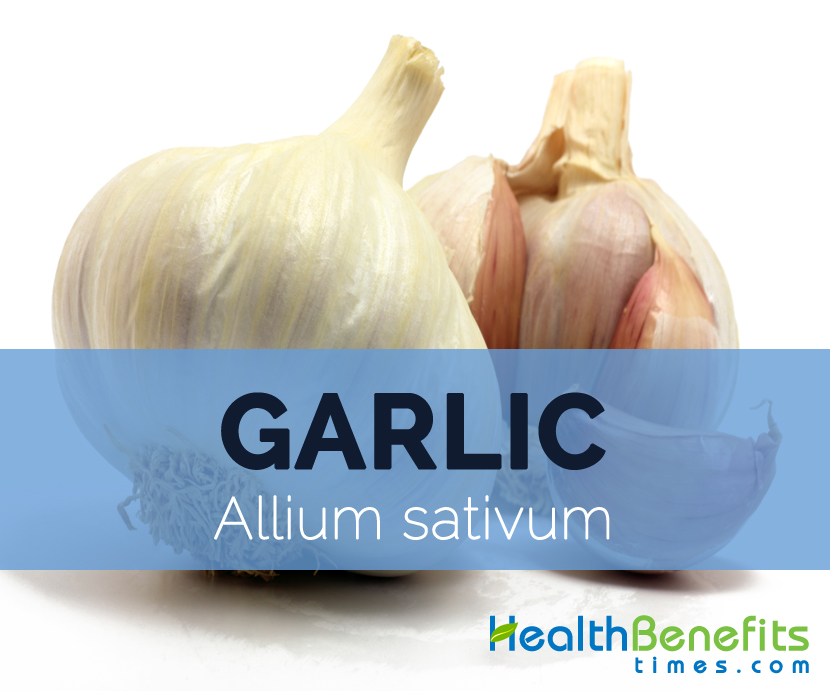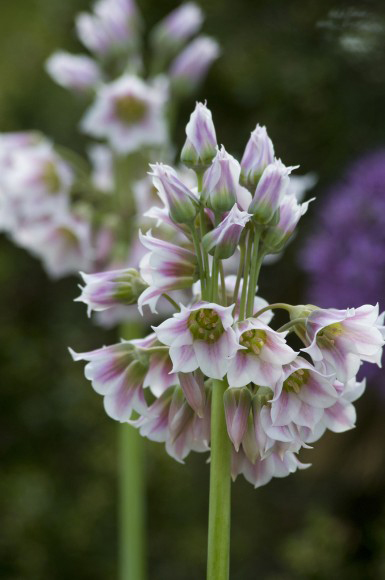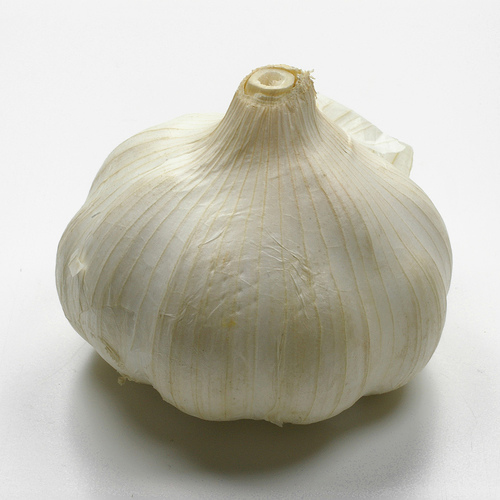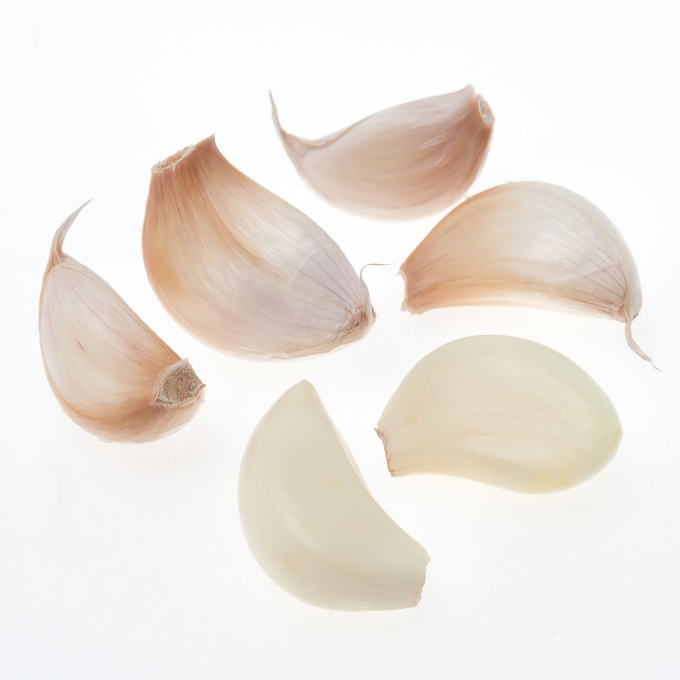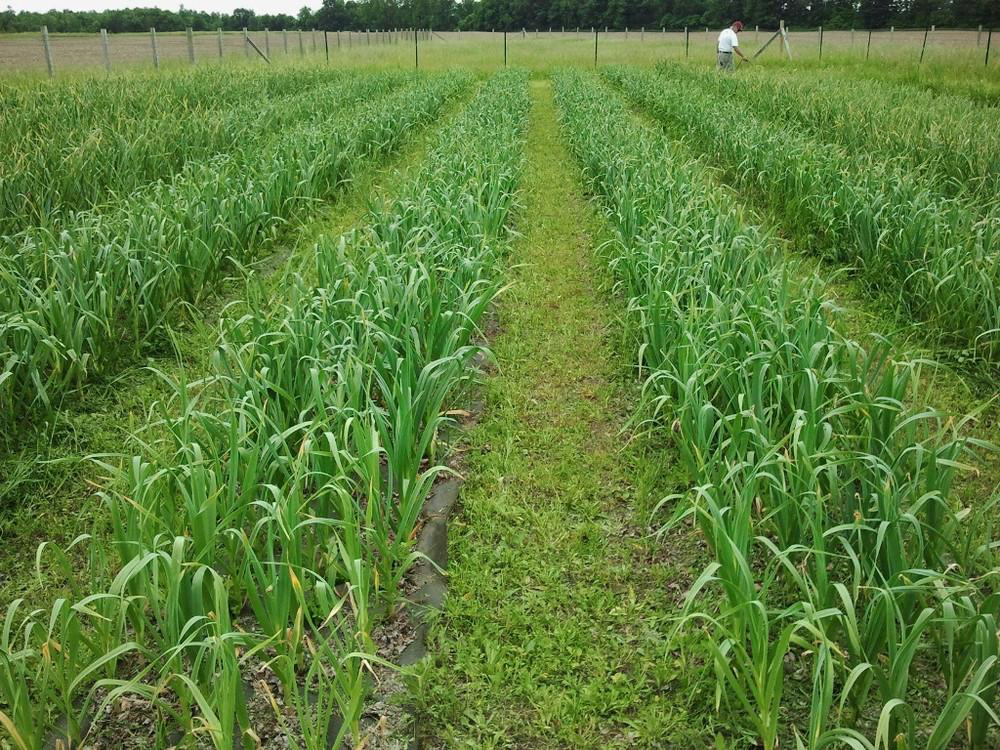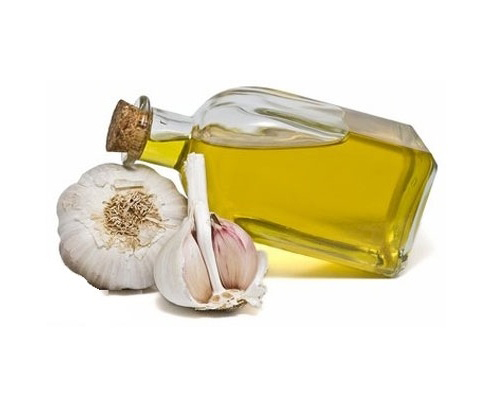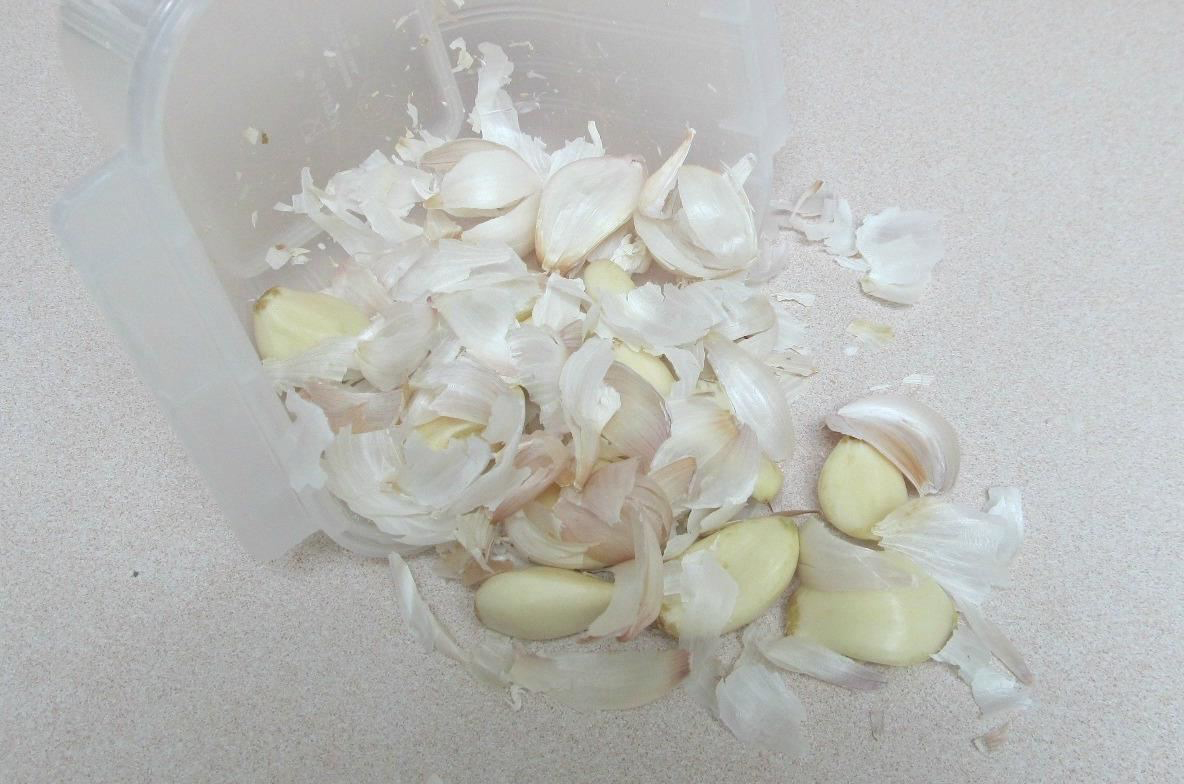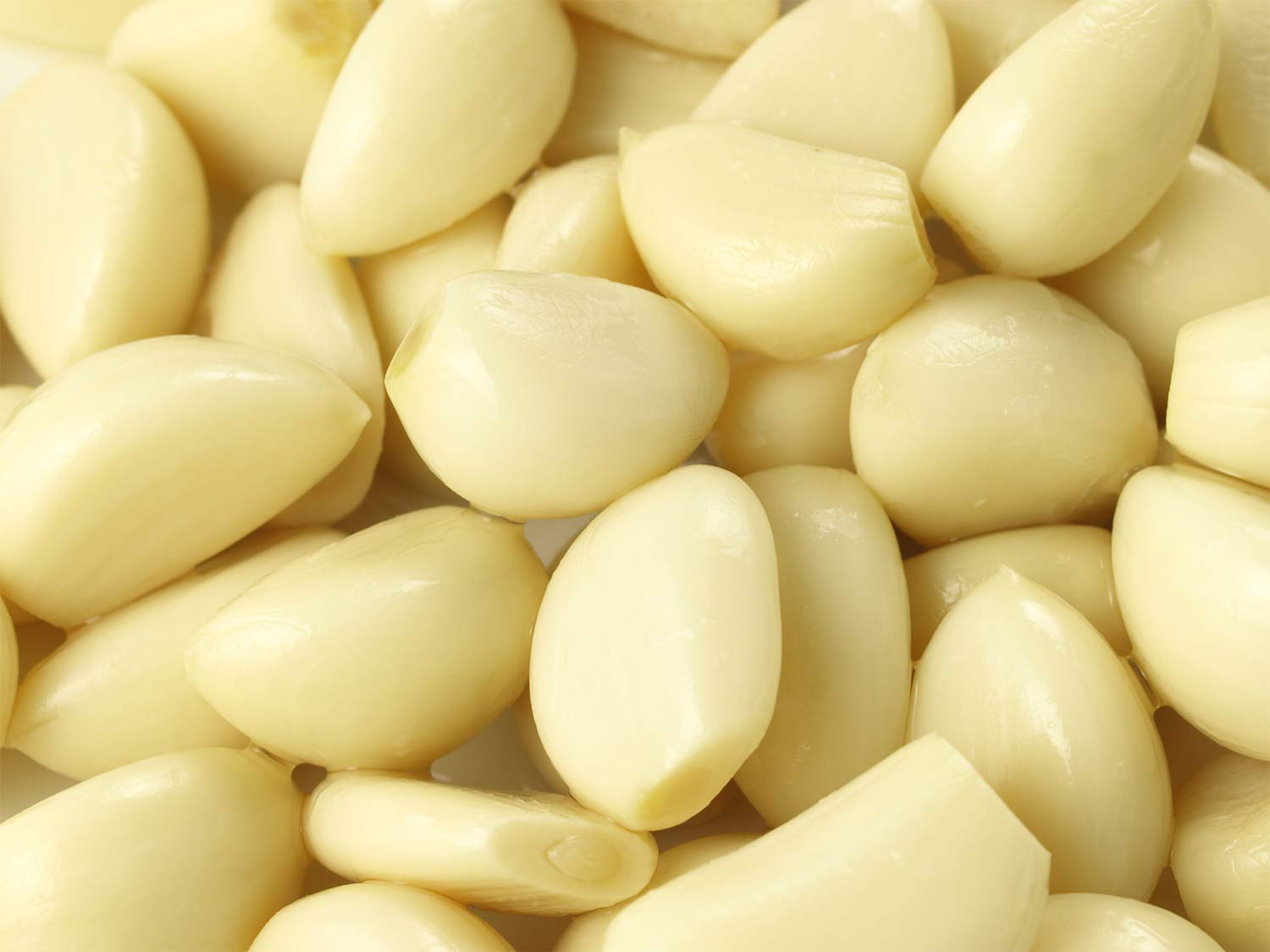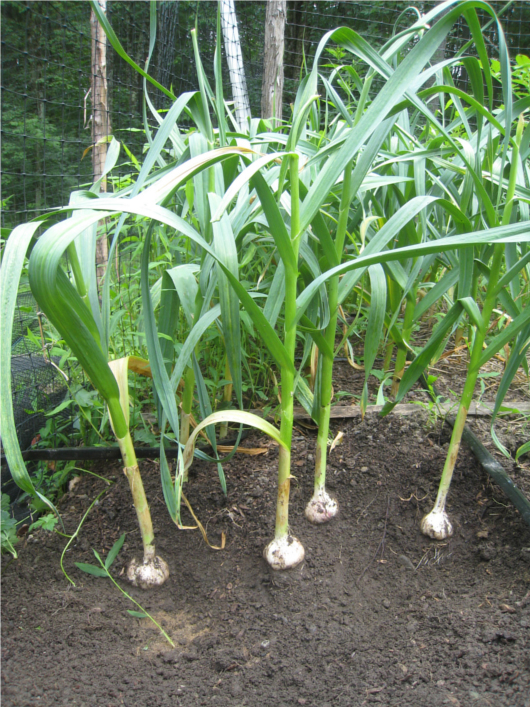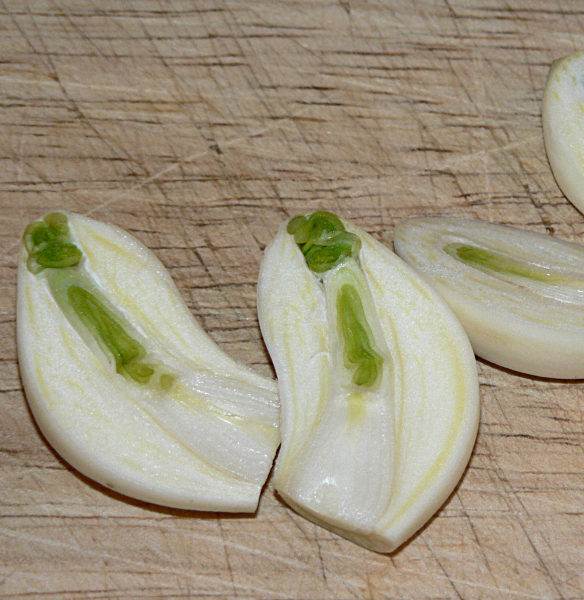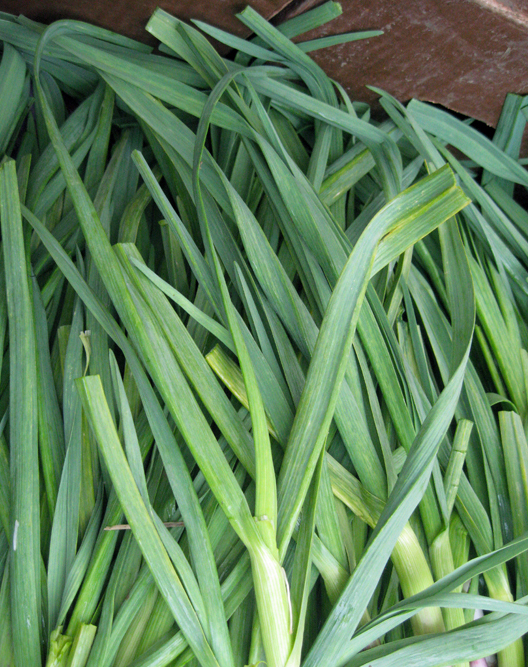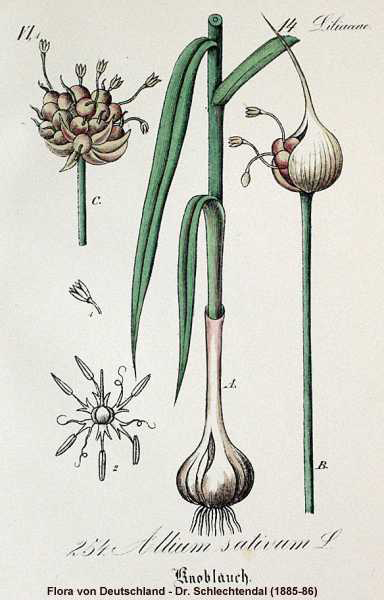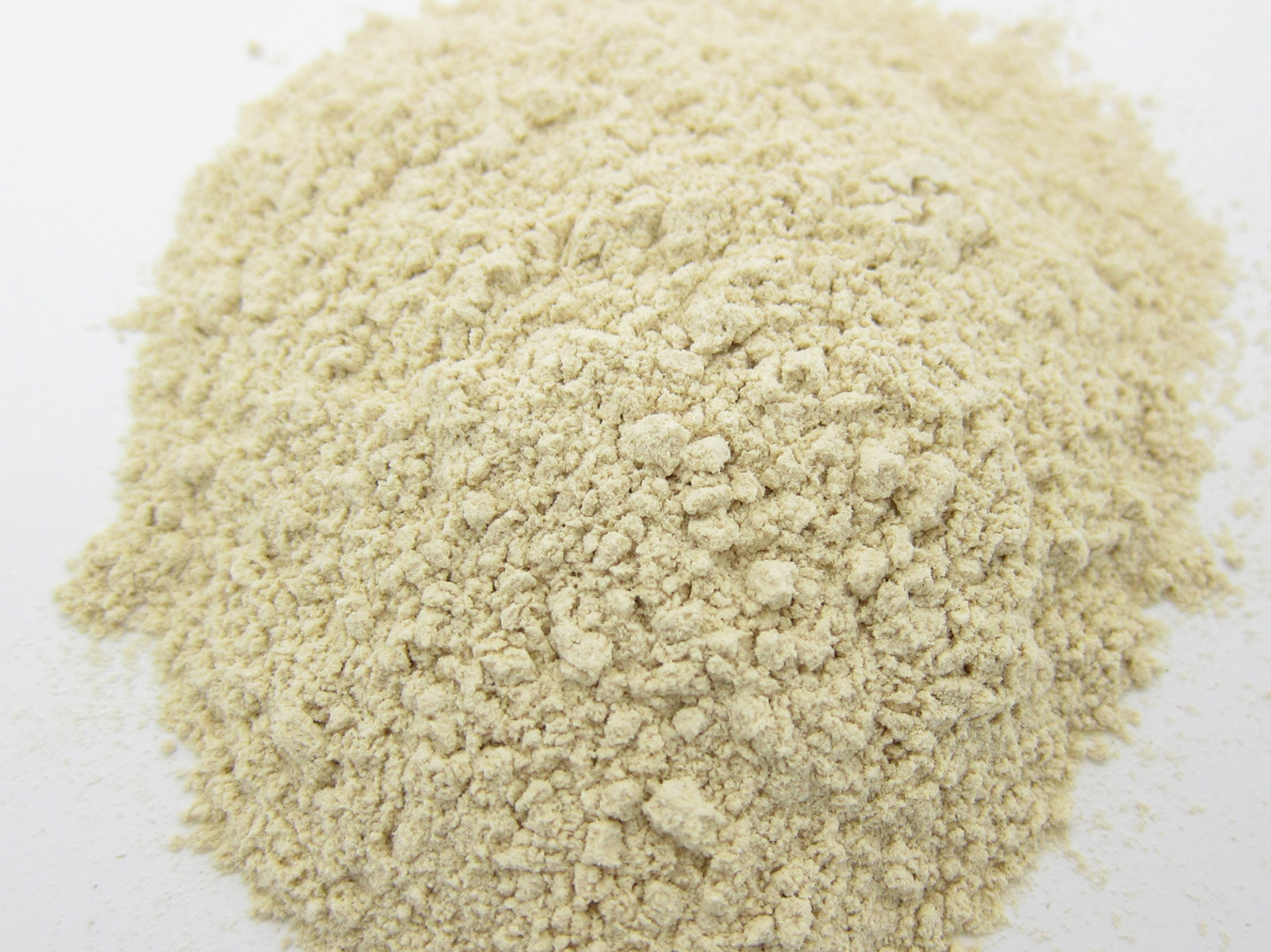| Garlic Quick Facts |
| Name: |
Garlic |
| Scientific Name: |
Allium sativum |
| Origin |
Central Asia |
| Colors |
Whitish-purplish |
| Shapes |
Globose to ovoid; Diameter: 6 cm (several cloves) |
| Taste |
Strong, pungent |
| Calories |
13 Kcal./cup |
| Major nutrients |
Vitamin B6 (8.54%)
Manganese (6.52%)
Vitamin C (3.11%)
Copper (3.00%)
Selenium (2.36%)
|
| Health benefits |
Treat urinary tract infections, Antioxidant activity, Eliminate contaminants, Prevent buildup of plaque, Reduce blood pressure |
(Allium sativum) also known as Wild Garlic or Field Garlic is a vegetable and most widely cultivated species of the genus Allium L. A perennial plant, native to Central Asia but is widely grown as an annual plant. Garlic is in the family Liliaceae, to which also belong leek, shallot, onion, rakkyo and chive.
It is an erect annual herb which bears flat grey-green leaves and green-white or pinkish flowers. Garlics are cultivated and used around the world. It is used as an ingredient, vegetables, pickles or chutneys.
Plant
Garlics are bulb forming erect annual plant, growing to 30-60 cm high. The bulb possesses several cloves. The cloves are whitish-purplish, globose to ovoid and 6 cm in diameter. The leaves are grey-green and grow linear-lanceolate and flat shaped. The herb yields hermaphrodite flowers which is green-white or pinkish in color. It thrives in a well-drained soil.
Nutritional Value
The serving size of 9 grams (3 cloves) provides 13 calories with 8.54% Vitamin B6, 6.52% Manganese, 3.11% Vitamin C and 3% Copper. The same serving size provides 1.3 µg Selenium, 14 mg Phosphorus, 16 mg Calcium and 36 mg Potassium.
Health Benefits of Garlic
Garlic is a natural home remedy which is used to cure health ailments. It is eaten fresh or cooked. It could be added to the food or consumed on its own. Along with its used as an ingredient in food, it provides various health benefits. Raw garlic is antibiotic with antiviral and anti-inflammatory properties. It promotes the health, immune system and blood circulation.
- Treat urinary tract infections
The extract of Garlic could be effective to treat the urinary tract infections that are related to pathogenic bacteria. The researchers reported that the extracts of garlic have good effect against the multidrug resistant strains. Garlic is used to treat the various diseases since ancient times. The microorganisms such as protozoa, fungi, bacteria and virus are perceptive to garlic preparations. Garlic possess the antimicrobial factors such as Allicin and sulphur compounds. (1)
- Antioxidant activity
Allicin is the organic compound which acts as an antioxidant against various health ailments. Vitamin E and coenzyme Q10 helps to prevent the damage caused by free radicals. (2)
- Eliminate contaminants
Diallyl sulfide and ajoene are the two compounds that reduce the chances of contamination in the production of infant powder. It is effective for the mothers who can’t breastfeed. The dose of these compounds effectively kills C.sakazakii in the manufacturing process of food. It has the ability to prohibit the pathogen. C.sakazakii can affect the baby’s blood stream and results to the life threatening conditions. (3)
- Prevent buildup of plaque
Garlic can reverse the buildup of plaque in the arteries and prevent the development of heart disease. It could slow down the process of atherosclerosis. The daily intake of garlic extract can slow down the accumulation of plaque by 80% and lessen soft plaque. The study shows that the garlic extract reduced the soft plaque in the arteries having metabolic syndrome. (4)
- Reduce blood pressure
The consumption of garlic helps to reduce the high blood pressure and prevent from cardiovascular disease. The effect is related to the hydrogen sulfide produced from garlic compounds and interacts that interacts with red blood cells. This helps to relax the blood vessels. The consumption of two cloves relaxed the vessels of arteries by 72 percent in rats. The compounds of garlic metabolize H2S that targets the channels of membranes and soothes the muscle cells.
- Prevent food borne illness
The compounds found in Garlic have the ability to reduce the bacteria that are found in the food. The bacterium known as Campylobacter is the cause for health ailments such as cramping, diarrhea, fever and abdominal pain. The bacteria are also responsible Guillain-Barre syndrome which is a paralyzing disorder. The compounds found in Garlic is much effective than the antibiotics to counteract Campylobacter bacterium which is the cause for intestinal illness. (5)
- Heart health
Garlic was used for medicinal purposes during ancient times. The consumption of garlic helps to lower the cholesterol levels and blood pressure that lowers the risk of heart disease. It also promote the immune system and counteracts cancer. Raw garlic is much effective than sprouted garlic. The compounds which are found in green plants prevent it against pathogens. The garlic extracts protects the cells from being damage. Sprouting improves the potential of garlic antioxidants. (6)
- Fights bacteria
Garlic possesses a substance which effectively counteracts the bacterial strains. The potent chemical compound found in garlic counteracts the resistant bacteria by paralyzing its communication system. It prevents from the toxin rhamnolipid secretion that can destroy white blood cells which are vital for immune defense system. (7)
- Helps fibrosis patients
Garlic prevents the lung infections in the people with cystic fibrosis. Allicin forbid the bacteria growth if garlic is taken at high dose. It also eliminates the pathogens. Allicin deactivates the Bcc bacteria and interrupts the biological process within the pathogen cells which helps to destroy them. (8)
https://www.youtube.com/watch?v=YDL9E5mNAjE
Traditional uses
- Garlic is believed to be diaphoretic, expectorant, diuretic, febrifuge, stomachic, stimulant, tonic, antiasthmatic, anthelmintic, anticholesterolaemic, antispasmodic, antiseptic and cholagogue.
- It is used to treat cancer, obesity, coronary heart disease, type 2 diabetes, hypercholesterolaemia, hypertension, microbial infections, cataract and gastrointestinal problems.
- Garlic, fenugreek and onion are used in Persian folklore medicine to treat diabetes.
- Garlic is used as the cure for gastritis, typhoid fever, dysentery, cholera, pneumonia, tuberculosis, heart disease, diabetes mellitus and hypertension.
- In southeastern Morocco, onion and garlic are used to treat hypertension.
- Garlic is used to enhance appetite and correct the effects of gluttony.
- During the past two world wars, garlic was used as an antiseptic.
- The syrup which is made from garlic aids asthma, cough, hoarseness, breathing difficulty and pulmonary disorders.
- Garlic assists tuberculosis, chronic bronchitis and dropsy.
- Garlic is rubbed on affected areas of rheumatism, arthritis, and toothaches.
- Garlic if rubbed over ringworm provides a relieving effect.
- In Mexico, bulb of garlic is consumed to prevent tuberculosis.
- In India, the garlic juice is applied after diluting in water to prevent hair color from turning grey.
- Garlic juice is used as vermifuge in the Antilles.
- In traditional Chinese Medicine, garlic is used to treat cold abdominal pain, diarrhea, oedema, dysentery and whooping cough.
- The Chinese people intake high amount of garlic to cure malnutrition or oedema.
Precautions
- Garlic causes bad breath and body odor.
- Some people might experience allergies by using garlic.
- People allergic to garlic might experience symptoms such as diarrhea, irritable bowel, mouth and throat ulcerations, breathing difficulties, nausea, and anaphylaxis.
- People who are allergic to garlic are also sensitive to onions, chives, garden lilies, leeks, ginger, shallots, and bananas.
- The topical application might cause burns. So test should be done on small skin area.
- The usage for the long term may have side effects such as gastrointestinal discomfort, dizziness, sweating, bleeding, allergic reactions and menstrual irregularities.
- The high dose of garlic with anticoagulant medications leads to high chances of bleeding.
- Garlic may interact with warfarin, saquinavir, antiplatelets, calcium channel blockers, antihypertensives, ciprofloxacin and hypoglycemic drugs.
- Garlic might be harmful to cats or dogs.
- The excessive intake of raw garlic may lead to irritation or even damage the digestive tract.
- Garlic can reduce the blood pressure.
- Garlic might interfere with blood pressure.
How to Eat
- It can be baked, boiled, sautéed and grilled.
- It could be consumed raw as well.
- Garlic is used as a spice or condiment.
- The raw minced garlic raw is added to salads.
- Raw garlic might be pickled.
- The garlic cooked or fried are used in stir-fries with seafood, meat, eggs, soups, noodles, and stews, curries, pastas, pizzas and sauces.
- The leaves are consumed as vegetables.
- The leaves are chopped and used in salads.
- The seeds (sprouted) are added to salad.
- The shoots are consumed as an appetizer or pickled.
- The leaves and flowers are also eaten.
Garlic – Allium sativum Facts
Garlic is an herb with flat grass and long leaves with papery skin. The greenish white or pink flowers are found at the end of long stalk. The bulb possesses many smaller bulbs which is covered with a papery skin and called cloves. It is a member of lily family which is also known as stinking rose.
| Name |
Garlic |
| Scientific Name |
Allium sativum |
| Native |
Central Asia |
| Common/English Name |
American Field Garlic, British Field Garlic, American Wild Garlic, Field Garlic, Garlic, British Wild Garlic, Poor Mans Treacle, Nectar Of The Gods, Sand Leek, Rocambole, Wild Garlic, Stinking Rose |
| Name in Other Languages |
Albanian: Hudhra;
Arabic:, Fom;
Aramaic: Tum;
Armenian: Sxtor;
Austria: Knoblauch;
Azeri: Sarimsaq;
Basque: Barahatz;
Belarusian: Časnok;
Belgium: Knofl ook;
Brazil (Portuguese): Alho-Comum;
Breton: Kignen;
Bulgarian: Chesun;
Burmese: Chyet Thon Phew;
Chinese: Suan;
Coptic: Skorton;
Croatian: Bijeli Luk;
Czech: Česnek Kuchyňský Pravý;
Danish: Slangehvidløg;
Dutch: Knofl ook;
Estonian: Küüslauk;
Esperanto: Ajlo;
Finnish: Valkosipuli;
French: Ail Blanc;
Frisian: Knyfl ok;
Georgian: Niori;
German: Knoblauch;
Gaelic: Gairgean;
Greek: Skordo;
Hausa: Tafarnuwa;
Hebrew: Shum;
Hungarian: Fokhagyma;
Icelandic: Hvítlaukur;
India:-
Assamese: Rosun,
Bengali: Rasun,
Bodo:, Chambram Gufur,
Dhivehi: Lonumedhu,
Dogri: Thom,
Gujarati: Lassun,
Hindi: Lasan,
Kannada: Bellulli,
Khasi: Rynsun,
Maithili: Lasun,
Malayalam: Poondu,
Manipuri: Chanam,
Marathi: Lasun,
Mizo: Purunvar,
Oriya: Rasuna,
Punjabi: Lasun,
Sanskrit: Ugragandha,
Tamil: Poondu,
Telugu: Tellapya,
Tulu: Bellulli,
Urdu: Lahasan;
Indonesia:-
Madurese: Bhabang Poté,
Malay: Bawang Putih,
Sundanese: Bawang Bodas
Irish: Gairleog;
Italian: Aglio;
Japanese: Nin-Niku;
Kashmiri: Romahan;
Kazakh: Sarimsaq;
Khmer: Khtüm Sââ;
Korean: Ma Nul;
Laotian: Pak Thiam;
Latvian: Ķiploki;
Lithuanian: Česnakas;
Macedonian: Luk;
Malaysia: Bawang Putih;
Maltese: Tewm;
Mongolian: Sarmis;
Nepal:-
Nepali: Lasun;
Nepalbhasa: Labha;
Norwegian: Kvitlauk;
Papiamento: Konofl ó;
Papua New Guinea: Galik;
Persian: Sir;
Philippines:-
Bisaya: Ahus,
Tagalog: Bawang,
Polish: Czosnek,
Portuguese: Alho Comum
Provençal: Aiet,
Romanian: Usturoi
Russian: Esnok;
Serbian: Češnjak;
Slovašcina: Luk-Česen;
Slovencina: Cesnak Kuchynský;
Spanish: Ajo;
Sri Lanka (Sinhalese): Lashunaa;
Swahili: Kitunguu Saumu;
Swedish: Vitlök;
Swiss: Ail;
Tajik: Sir;
Thai: Hom-Tiam;
Tibetan: Sgog Skya;
Tigrinya: Shegurti Tseda;
Turkish (Adi): Sarımsağı;
Turkmen: Sarymsy;
Twi: Gyene Kankan;
Ukrainian: Chasnyk Horodni;
Uzbek: Sarimsoq;
Vietnamese: Tỏi;
Welsh: Garlleg;
Yiddish: Knobl |
| Plant Growth Habit |
Erect annual herb, bulbous |
| Soil |
Well-drained |
| Plant Size |
30–60 cm |
| Leaf |
Linear-lanceolate, flat, grey-green |
| Flower |
Hermaphrodite, green-white or pinkish |
| Cloves shape & size |
Globose to ovoid; Diameter: 6 cm (several cloves) |
| Cloves color |
Whitish-purplish |
| Cloves peel |
Papery |
| Flavor/aroma |
Pungent, spicy |
| Cloves taste |
Strong, pungent |
| Varieties/Types |
- Australian White
- Glenlarge
- Italian White
- Monaro Purple
- Red Rocambole’ syn. Creole ‘Rojo de Castro
|
| Major Nutritions (Raw) |
Vitamin B6 (Pyridoxine) 0.111 mg (8.54%)
Manganese, Mn 0.15 mg (6.52%)
Vitamin C (Ascorbic acid) 2.8 mg (3.11%)
Copper, Cu 0.027 mg (3.00%)
Selenium, Se 1.3 µg (2.36%)
Carbohydrate 2.98 g (2.29%)
Phosphorus, P 14 mg (2.00%)
Iron, Fe 0.15 mg (1.88%)
Calcium, Ca 16 mg (1.60%)
Vitamin B1 (Thiamin) 0.018 mg (1.50%) |
| Health Benefits |
- Treat urinary tract infections
- Antioxidant activity
- Eliminate contaminants
- Prevent buildup of plaque
- Reduce blood pressure
- Prevent food borne illness
- Heart health
- Fights bacteria
- Helps fibrosis patients
|
| Calories in 3 cloves (9 gm) Raw |
13 Kcal. |
| Other Facts |
- Garlic is believed to treat heart disease, colds, cancer and flu.
- The garlic is consumed to reduce the level of blood cholesterol and plaque buildup in arteries.
- It was used to treat warts, acne and toothaches.
- The fear of garlic is called alliumphobia.
- Garlic is believed to keep vampires away and fight off evil spirits.
- Garlic is used as an ingredient in cocktails
|
Comments
comments


